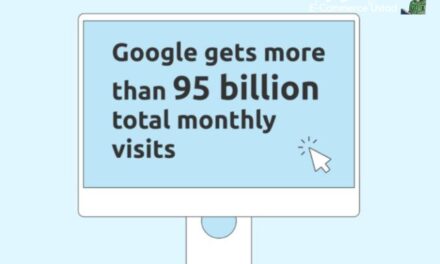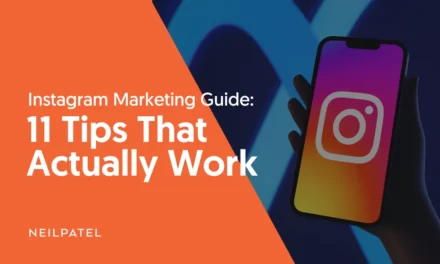
9 Steps To Start Freelancing As A Student


Start Freelancing As A Student
With remote work becoming more popular, more individuals than ever desire to become freelancers or start freelancing. Which brings us to the next obvious question…HOW DO I START FREELANCING?
Fortunately, becoming a freelancer is easier than ever. More than 57 million Americans freelanced in 2019, and the trend is expected to continue, with more than half of Generation Z planning to start freelancing.
Not only is it more fashionable than ever to be a freelancer, but organizations are more comfortable hiring freelancing rather than full-time staff.
Several jobs may be done remotely, and businesses are not required to give freelancers the same financial or medical advantages as they do to full-time workers.
Step 1 – Define Your Goals For Freelancing
Before you engage in this adventure of freelancing, you must have a clear notion of your goals. Will you get in the vehicle and begin to drive without understanding where you’re going? (Set away the wanderlust) No, right? Avoid doing that with your initial (probably) business, either. Begin by asking WHY. Why would you wish to start freelancing? Knowing the answers to these queries at the outset will benefit you in the long term.
Step 2 – Choose Your Best Skills With Which You’ll Start

Start Freelancing As A Student
Recognizing your abilities is the first and most crucial step in learning how to establish a freelancing business. Your unique skills are your most valuable asset. Whether you plan to be a full-time or part-time freelancer, your business will be developed on the specific abilities you have to offer. Identify the various abilities you’ve developed over the years that others may lack. This is why they will pay you. Consider starting freelancing with talents from prior employment, hobbies, or self-taught abilities.
Step 3 – Define your target clients
Once you’ve determined which abilities will be the most profitable and fun for you, consider who will pay you to utilize them.
Many freelancers fail to be thoughtful and aspirational in this area.
They begin freelancing and become so terrified of selling that they would accept any client who offers them any amount of money to accomplish anything.
Think about your ideal clients
Consider the abilities you’ve selected to begin a freelancing business with. Who requires such assistance? And who would you WANT to work with if you needed that kind of assistance?
Small enterprises, non-profits, and eateries are among the examples. Do not overthink it.
Begin with a stream of consciousness – who do you wish to collaborate with? Start by opening a blank document or notepad.
Dig deeper with client avatars
It’s time to narrow down your potential clientele and break out of classifications.
“Small business owners” is a good starting point, but let’s go further.
“Small business owners” might be authors or dentists, for example. And “restaurants” might be vegan or family-owned establishments. These are still rather categorical descriptors. We want to get inside their thoughts now.
Step 4 – Bundle Your Skills Into A Service

Start Freelancing As A Student
Once you’ve determined what skills you want to start with, strive to combine them into a single distinct service. Combining several expertise will help you enhance your earnings and the value of your product.
Step 5 – Legally incorporate your business before your start freelancing
Let’s now discuss how to lawfully launch your freelancing business.
You may postpone this phase, but I suggest taking it as soon as possible so that tax planning is simple from the outset.
“Start a freelance business” could appear intimidating, but it isn’t. Starting a freelancing business is theoretically as simple as creating a formal organization.
Choose a name for your business
The first step in starting a business is deciding on a name. It may be anything you like – it can include your own name or not. It might be a made-up word, or it could not. It is all up to you. Finally, I picked “Freelancing School” since all of the content is relevant to freelancing, and I wanted to demonstrate that learning was an important aspect of the company.
I could have just as easily used my own name, such as “Jay Clouse Creative,” or a combination like “Jay Teaches Freelancing.”
Nothing you pick is permanent, but altering it is a pain. So, while you shouldn’t allow this step to derail your freelancing career, it is something to consider. It is also utilized for legal purposes far more than for marketing.
If you form an LLC called “John Doe Creative” and later decide you want to call the firm “Doe Designs,” you can do so while keeping your company incorporated as “John Doe Creative.” You will only see the previous name on items like your bank account and bills.
If you absolutely want to alter the legal name, you may either create a new organization or open a Trade Name or DBA (Doing Business As).
Step 6 – Reach Out To Potential Clients
The next step in learning how to get started freelancing while a student is to contact potential clients. You might begin by informing your friends and relatives of your service and asking them to help you spread the news. Simply connect to your existing network and you’ll be good.
Step 7 – Decide Reasonable Rates
Pricing your service in accordance with market standards is crucial. If you establish an unrealistic price, you will be eliminated from the competition. Begin slowly and gradually boost your pricing once you have established a solid name in the business.
Step 8 – Create a portfolio to showcase your skills

Start Freelancing As A Student
Every customer employs us because they trust you, whether they realize it or not.
They believe you will accomplish the things you say you would do and produce the level of work that you promise.
Why you need a portfolio to start freelancing
A customer assignment can sometimes come simply – they could be family or a friend. However, most clients will require a reason to trust you.
As a result, you must BUILD that trust.
When starting a freelancing business, the greatest method to create trust with a new customer is to present samples of previous work that are comparable to the task they are contemplating hiring you for.
Which would you rather hire: A graphic designer who can show you ten logos she’s created for customers or one who couldn’t show you a single one?
The answer is obvious: we want proof that this individual is trustworthy. Prepare to give work samples to potential clients from the start so they have cause to trust you can perform the job.
How to display your portfolio when you start freelancing
Some people showcase their work on third-party websites like as Facebook or Instagram, Dribble, or Behance. Others may create their own website to display their portfolio.
It’s fine if you have to start using a third-party platform. You’ll be OK as long as clients can locate and view your work without having to beg for it.
However, if you want to design your own portfolio website, Squarespace, Carrd, Webflow, or WordPress make it simple.
Having your own website and platform, rather than relying on another organization like social networks, will be an important advantage in the long term. We anticipate that everyone will have a webpage. We also want them to have a website-specific email address.
Step 9 – Start creating new advocates
When you visit your champions and reconnect with them, preferably one of them employs you or provides a direct introduction to someone else who hires you.
That first project will be your starting point; perform an excellent job for them and you may expand from there.
If that does not happen straight away, you may start to stress and consider meeting with completely different people to pitch your services. So let’s get started on it.
But I can’t emphasize enough how much better off you’ll be if you reach out to EVERY existing advocate you can find first. Finding clients is considerably easier when they already know, like, and trust you. So, before reaching out to strangers, make sure you’ve spoken to everyone you can.
Essential Tips For Freelancing As A Student

Start Freelancing As A Student
The following portion of our blog on How to Start Working as a Freelance Student must have some special tips since all of our blogs fail to bring further insights to our valued readers. So here are a few pointers to help you have a great freelance job.
- Don’t wait for customers to come to you. Contact them directly
- Testimonials are quite powerful. Ensure that you include a few of these on your website/blog.
- Be kind if you refuse the job. It is essential for having an excellent track record.
- Always have a copy of your work on hand.
- Prepare ahead of time
- Try not to multitask.
- Make certain that your interpersonal abilities are great.
- Right away as you get money, send invoices.
- Never be shy about discussing money.
All of your inquiries on how to perform freelancing while studying should have been answered by now.
Conclusion:
Starting out as a freelancer can be challenging, but it can also be a rewarding way to earn money and develop new skills. By following these tips on how to start freelancing as a student, you’ll be well on your way to building a successful freelance career while still being able to focus on your studies.































Recent Comments